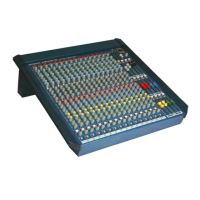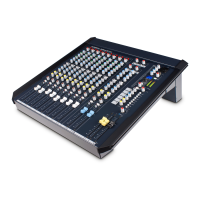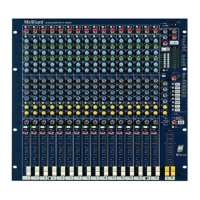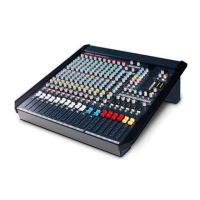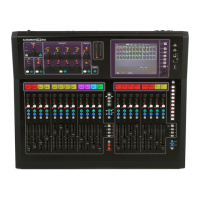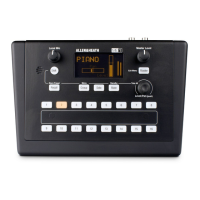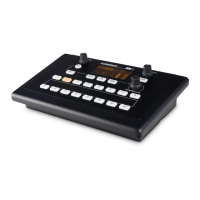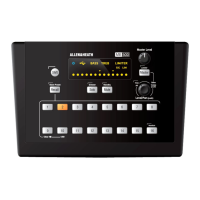
Do you have a question about the ALLEN & HEATH MixWizard WZ3 and is the answer not in the manual?
| Channels | 16 |
|---|---|
| Phantom Power | Yes |
| Monitor Outputs | 2 |
| Type | Analog |
| Outputs - Other | 4 |
| Effects Returns | 2 |
| Inputs - Other | 2 (Stereo) |
| Headphone Output | 1 |
Discusses care and handling for damage prevention, environment, cleaning, transport, and hearing safety.
Instructions for setting up the console for free-standing operation, including side trim and connector pod placement.
Guidelines for mounting the console in a standard 19-inch rack, considering space for cables and connectors.
Explains the importance of proper grounding for safety and audio performance, covering connection requirements.
Provides the correct procedure for powering the console on and off, recommending amplifier sequencing.
Details how to connect an optional backup power supply for dual redundancy and uninterrupted operation.
Addresses common audio problems like hum and buzz, offering solutions for interference reduction and proper grounding.
Explains the principles of balanced and impedance-balanced connections and their benefits for signal integrity.
Describes the XLR and TRS jack inputs for microphones and line-level sources, including normaling and impedance.
Details the stereo inputs for the WZ³12:2 and WZ³16:2 models, covering balanced and unbalanced connections.
Explains the function of the insert point for external processing equipment, specifying signal levels and cable wiring.
Describes the configuration for using the built-in processor as a single stereo effects engine fed by AUX5.
Explains the dual mode operation, using AUX5 and AUX6 to feed two independent effects processors simultaneously.
Details how to turn off the internal processor to use external effects devices with AUX5/AUX6 sends and returns.
Explains how combined effects signals can be returned to Auxes 1-4 for monitor feeds, with options for stereo or mono summing.
Guides users on how to navigate and select available effects presets using the SEL and BANK controls.
Describes the procedure to turn off the internal processor, indicated by the green indicator light.
Explains how to change the default MIDI channel for controlling the effects processor and editing parameters.
Details the MIDI Program Change messages required to select different effects presets on the console.
Covers the use of the Allen & Heath FX Editor software for editing effects parameters via MIDI, connecting to a PC.
Describes the master level controls for each aux mix, adjusting output levels and their effect on internal processors.
Explains the function of the 100mm faders for the main Left-Right mix, including optimal operation for performance.
Details the recessed switch for selecting the M output source, allowing it to function as mono sum or AUX6 master.
Guides on using the console's input and output meters for optimal gain staging, including peak indicators.
Details how to set channel gain levels using PFL to match source signals to the console's operating level.
Explains how to match the console's output levels to destination equipment like amplifiers for best performance.
Defines key terms related to audio signal levels, including headroom, signal-to-noise ratio, and dynamic range.
Step-by-step instructions for removing the console base to access internal assemblies and options.
Guidance on setting internal option jumpers for custom configurations and ensuring correct fitting.
Instructions for correctly reassembling the console base after configuring internal options.
Details jumper settings for mono channel aux sends, allowing pre-insert/pre-EQ or post-insert/post-EQ configurations.
Explains jumper settings for mono channel direct output source selection, between pre-fade and post-fade.
Describes jumper configurations for mono channel aux sends, allowing different pre/post or switched settings.
Explains the option to fit balanced driver ICs for higher output drive and nominal +4dBu level on aux masters.
Describes the optional card for linking consoles, enabling channel expansion and master/slave configurations.

